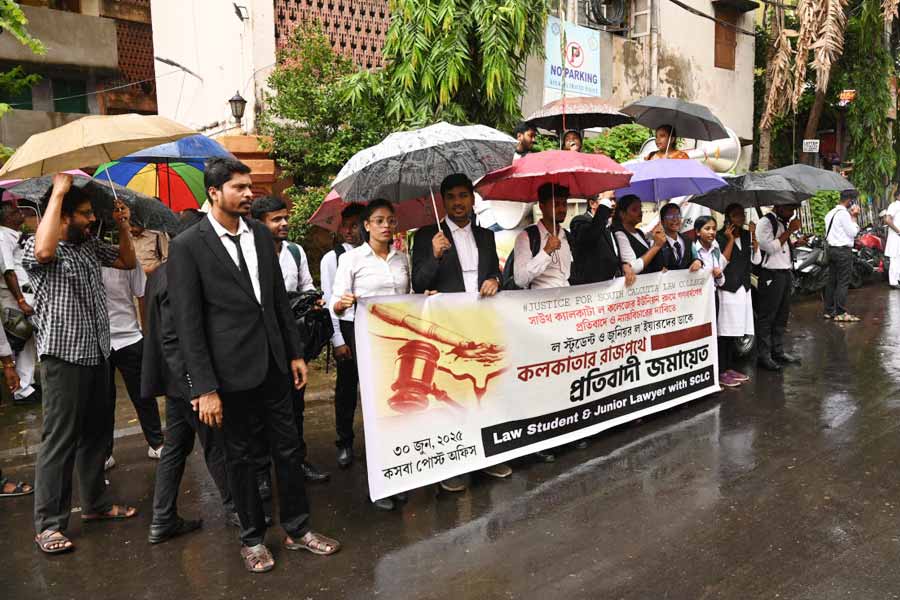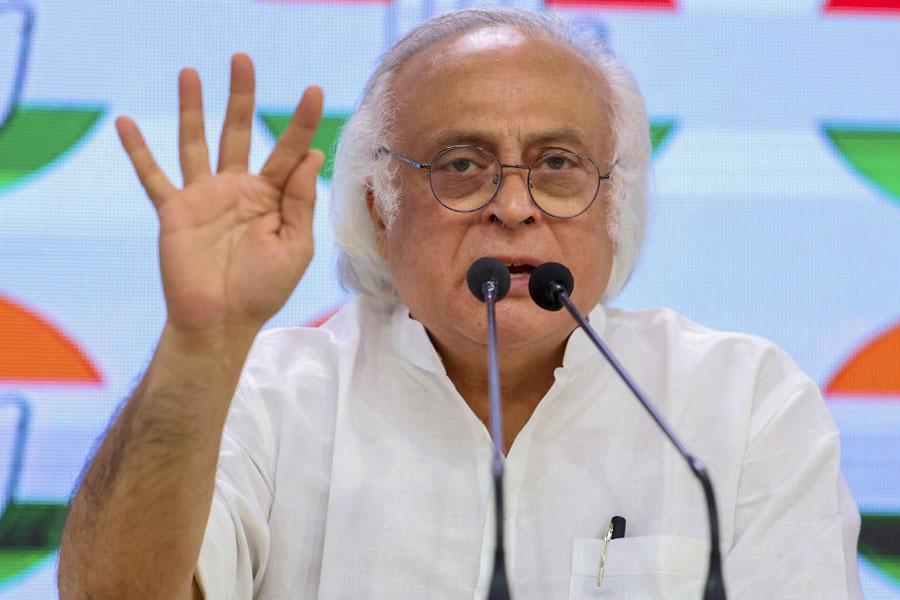 |
 |
 |
 |
 |
 |
| (From top) Tannishtha Chatterjee and Subrata Dutta in Bibar; Bikram Ghosh and Jaya Seal in Hothat Nirar Jonyo; Mou and Raima Sen in Nil Nirjane; Baisakhi Marjit and Nelanjana in Swapner Feriwala; June Maliah and Ayan Mitra in Nil Nirjane and Tannishtha and Subrata in another frame from Bibar |
I was pleasantly surprised when Bibar was cleared by the censor board without a single cut. The producer, Kamal Bansal, of the legendary R.D. Bansal banner, called me up from the censor board office to convey the good news. I was relieved as another controversy on Bibar, after what I faced with Hothat Nirar Jonyo would have done little good to the film and to my persistent endeavour to make “good” cinema.
As it is, cinema in Bengal is probably a dying industry. At one end there is the onslaught from the big-budgeted Hindi movies. You find them in multiplexes, in every other mainstream hall and they are much-hyped by the media, almost as much to wipe out any space for regional cinema. At the other end there is the mindless copying from South Indian films. The producers have no option at the moment, they have kind of arrived at a safe formula to get their investments back. Yet the audience is dwindling and the hits in mainstream Bengali film market are few and far between.
A few people, who still remain in this trade out of sheer passion, cannot hide their disappointment and cynicism. As Dipen Mitra, owner of Mitra cinema in Hatibagan says, “This seems the last leg. Cinema will die down. This hall will run as long as I am alive and I am passionate about films. After me, probably there will be no one in my family interested to run this theatre.”
This is a situation which, in a way, looks similar to Europe. In Europe, too, the onslaught from Hollywood mainstream is constantly pushing ‘regional’ cinema to the periphery. Some filmmakers are trying to counter this onslaught by bringing in new style and form ? radically different from the ‘mainstream’. Many of their films deal with subjects which are sexual, bizarre and often intended to hurt so-called sensibilities. The only way to counter the ‘feel good’ mush from the mainstream is to create something which hits you below the belt and jars you. Artistic sensibilities, yes, but the definitions are not as preached by the mainstream or the critics. This is what the European films are trying to say.
In Bengal, too, consciously or unknowingly, filmmakers like us are trying to break away from the mainstream mould. The kind of money that we get to make a film is often 1/100th of a big-budget Hindi flick and about a fourth of each of the South film remakes that is churned out from Tollygunge mainstream. But that we are getting noticed is now apparent as five years after Ek Je Aachhe Kanya, I have been asked to write an article on the emerging trend of “sexuality” that is perceived to be prevalent in alternative Bengali cinema. I look at this offer to write as a small victory over the media’s fondness towards the Shah Rukhs and the Aamirs and the Chopras and the Ghais. At least, we are getting noticed. Not bad at all! Here, let me point out that through this article I am not trying to defend using ‘sex scenes’ in my films. I am just giving my point of view. Take it or leave it.
Yes, right from Ek Je Aachhe Kanya through Nil Nirjane to Bibar, I have often been asked why sexuality plays an important role in all my films. Do I deliberately use sex to boost up sales of my films? A film critic has even pointed out that all the directors who make ‘alternative’ films, me included, use bed scenes as ‘item numbers’ in our movies, almost the same way mainstream filmmakers use song and dance numbers in their flicks.
Sex in movies had never been a big deal. Right from Raj Kapoor-Nargis days to the present age of Jism and Murder, Hindi movies have always showcased sex. Only when it comes to sex in Bengali movies that critics and a part of the intelligentsia start detesting it and raise questions. No one raises a question when bikini-clad Mallika Sherawat becomes a daily item in mainstream newspapers. Talks are on if there is a kissing scene in Bariwali or a chocolate-licking scene in Ek Je Aachhe Kanya or two girls pecking in Nil Nirjane.
While I was filming Bibar, I was asked plenty of times whether I chose this controversial novel deliberately to sell my film on sex. Unfortunately, those who were asking this question did not know that the Samaresh Basu novel became controversial not because of the sexual content, but because probably it brought a completely new trend in Bengali literature. Bibar was a novel which dealt with stream of consciousness and angst of a self-destructive youth called Biresh, whose ideas on morality were not exactly traditional. After four movies in five years, I decided to do Bibar not because of its sexual content, but because it was a challenge to translate the novel into celluloid.
Bibar, incidentally, has sex scenes. There is a kissing sequence and a love-making scene. The sexuality of Biresh and Nita is portrayed in a rather matter-of-fact manner. And here lies the difference between sexuality of our films and the mainstream cinema.
In Bibar, sex comes naturally. Tannishtha Chatterjee, who plays Nita, is never put on to any glamorous makeup. Nor does the cinematographer, Premendu Bikas Chaki, try to create a light which robs the natural look of the film. In Hindi movies, Mallika Sherawat and Bipasha Basu are made to look glamorous through complete body makeup and plenty of unnatural lights. They seem unreal and, therefore, acceptable.
Here I would like to make my point against the accusation of trying to sell sex through our kind of movies. If selling sex was the idea, we could have made the scenes ooze glamour. The females would have looked sexy. And I am sure, the critics and the people groomed to swear by mainstream films would have loved the ‘treatment’ as their sensibilities would not have got hurt. At the end of the day, the ‘feel good’ factor would have helped to churn out happy reviews about my films.
I am not interested. I have no intention to make the critics and the intelligentsia feel good. I am not selling sex. I am talking of psychology, which is often stark. Take me if you can. If you cannot, dump me. But mind it, you won’t be able to ignore us once you are out of the ‘feel good’ mould.











